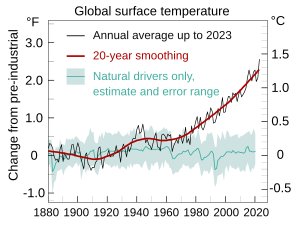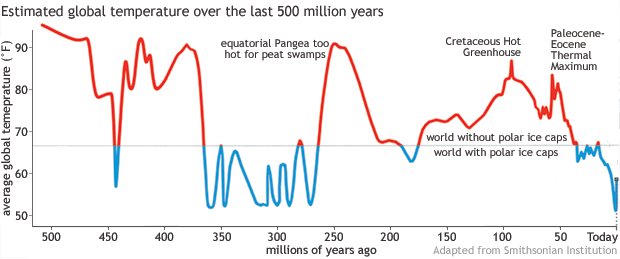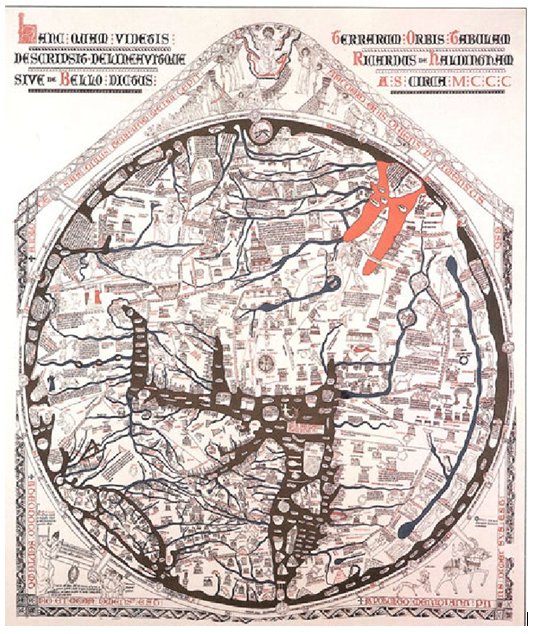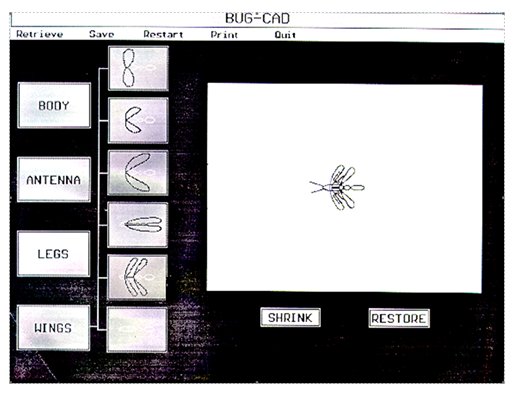 | ||||||||||||||||||
| The table below provides links to materials which are relevant and applicable across all of the courseware in this program. For ease of access, this table is reproduced on every page of each lesson. | ||||||||||||||||||
| ||||||||||||||||||
| Creativity | ||||||||||||||||||
| When we started the Certificate in National Preparedness and Homeland Security we asked experts what were the critical elements needed in the field. The most common component was creativity. Emergencies are becoming larger, more complex and dynamic such that emergency managers need to be creative and adaptive. We thus generated this new material that demonstrates how responders can teach themselves to be more creative. The material has applications across a wide variety of domains. | ||||||||||||||||||
| The Known, The Unknown and the Unknowable Each year the Alfred P. Sloan Foundation sponsors a conference with the above name. See: The Known, the Unknown and the Unknowable, Ralph Gomory, Scientific American, June 1995, pg. 120. See www.ralphgomory.com/wp-content/uploads/2011/10/73-The-Known-the-Unknown-and-the-Unknowable1.pdf. The conference focuses not only on what is known, unknown and unknowable, but also on questions such as: How can we identify and deal with the unknown and unknowable? When we will die? The end of the earth? Time travel? Is a COVID-19 vaccine possible? Are we close to a war? When will the next disaster occur? Is there a God(s)? What is safety/security? How do we know? | ||||||||||||||||||
| OpenAI (www.openai.com), the organization responsible for the ChatGPT chat bot, has two units in its research group, the Known Known and the Unknown Unknown. | ||||||||||||||||||
| Satire of the Unknown: www.youtube.com/watch?v=F74iqEJnb14. | ||||||||||||||||||
| The Fermi Paradox: During the Manhattan Project, the atomic scientists were creating the atomic bomb at the research site in Los Alamos, New Mexico. The site was top secret and there was very little to do. Some of the top scientists would take hikes during their lunch breaks during which they would discuss a variety of topics. J. Robert Oppenheimer, the leader of the Manhattan Project, kept a personal diary of the discussions. During one of the discussions the topc of extraterrestrials arose. Enrico Fermi, the Nobel Prise winning physicist, commented: "If extraterrestrials exist, then where are they?" | ||||||||||||||||||
| Fermi's Paradox is an example of science at work. We can more formally restate the paradox as a hypothesis
to be tested "Extraterrestrials do not exist". As a hypothesis it can be refuted by a single counterexample.
Examples of evidence that would refute the hypothesis would be observing an exterrestrial, finding an artifact of an exterrestrial or mesages
from extraterrestrials. From the lack of evidence, an empirical scientist would conclude that the hypothrsis is true.
Some theoretical scientists believe that there is a possibility for intelligence life to exist. The "Search for Extra Terrestrial Intelligence (SETI) Institute" has been searching for life and intelligence beyond Earth for the last 40 years. Ironically, each day the SETI search goes on the existence of extraterrestrial intelligence becomes less likely. One might ask why are these scientists still funded and continue? The answer is collateral benefits. During the SETI crusade, they have made many discoveries that have contributed to our knowledge of the origins of the universe, astronomy, physics, and countless other sciences. The same is true of the crusade to build an atomic bomb (Manhattan Project) which resulted in the advancement of physics, chemistry, medicine, engineering and countless other disciplines. There are many other examples in our field of the use of Fermi like reasoning:
| ||||||||||||||||||
| Measurement | ||||||||||||||||||
Measurement is an essential function for emergency management. It contributes to:
| ||||||||||||||||||
| Duality Theory | ||||||||||||||||||
| For some types of problems it is helpul to examine the opposite formulation to the problem. For example in the field of operations research linear programming problems can be
formulated as maximization problems or minimization problems that result in the identical solution. One of these formulations is easier to solve than the other thus it behooves us to
determine which formulation will require the least effort.
We can look at the causes of crime or the conditions that create lawfulness. One of these may be easier or more beneficial to solve than the other. In healthcare we can classify patients as being healthy or unhealthy focusing on illness or wellness. One way we focus on treating conditions rather than preventing them. For example, during the COVID-19 Pandemic, the foci were on vaccines and medical treatments. An alternative view would be to research those conditions (comorbidities) that lead to the death of patients with COVID-19. Common behavioral comorbidities include:
| ||||||||||||||||||
|
Vegetarian: a person who does not eat meat, and sometimes other animal products, especially for moral, religious, or health reasons.
Source: Oxford Languages. https://languages.oup.com/google-dictionary-en/.
Some vegetarians are activists. They try to convert others to a vegetarian lifestyle. They also try to ban the production and consumption of meat and animal products through political action. Note that some people consume meat for religious, ethnic and health reasons. Humans are, by nature, omnivores. We are born with body systems that are capable of extracting nutrients from both plants and animals. Examples are teeth - we have a variety of teeth that can mash grains, nuts and other foods; and incisors - that facilitate meat eating. We have digestive tracts, enzymes and digestive juices that facilitate the digestion of all types of food. Anthropoligists attribute the development of the human species, particularly our brain capacity, to a protein rich meat diet. Omnivorism contributes to the survivability of a species. An omnivore is not tied to the food of a region. Omnivores have diverse diets that allow them to adapt to local food availability and permits them to be mobile. Humans need a variety of nutrients and substances in different amounts to survive and be healthy. Foods have differing amounts of different components. Diets are mappings of food components to human nutritional needs. There are an infinite number of possible diets. People with diseases (e.g. diabetes) and medical conditions like allergies require specialized diets. Athletes consume diets that contribute to their performance in a sport. Similarly soldiers have meals (MREs ) that are designed for persons of their age. They may actually be harmful to people of other age groups. MREs are carefully used in emergency situations. From a systems viewpoint these diets are special cases of the classic Knapsack problem e.g. what do I include in my diet? In systems science, some problems exhibit what is called duality - what should I not include in my diet. Vegetarians constrain their diets to vegetable foods. It is a fundamental law of systems science that adding a constraint on a system limits the potential optimality of the system. Vegetarians must be very careful to formulate their diets to ensure that they consume foods that will meet their nutritional needs. In today's society, with our active lifestyle, fewer and fewer people are preparing their own food. Packaged foods, fast foods, restaurants and other means of feeding oneself are becoming more common. For example, I eat every meal at a restaurant. This puts another significant constraint on my diet. My company SciencEngines develops medical research systems. As a public service to our constituents, we have developed and made available to the public a nutritional resource. See www.sciencengines.com/Ken/Nutrition.htm. There is only one "perfect" food providing the complete needs for a human - mother's milk. And of course it is not vegetarain. We oftern hear from activists "It's made from plants" implying that consuming plants and plant products is universally good. However, nicotine, sugar, caffeine, alcohol, cocaine, heroin and many other substances are harmful. In reality, plant products contribute to the deaths of more people that any other source. The environmentalist perspective: :Ken's Garden. What do plants consume? |
||||||||||||||||||
| Problem Solving Old Quip: When all you have is a hammer, everything looks like a nail. Common beliefs:
Focus on models, frameworks, descriptions and data. | ||||||||||||||||||
| Tunnel Vision Our view of the world is shaped mainly by events that impact us during our lifetime. These include but are not limited to:
| ||||||||||||||||||
 | ||||||||||||||||||
| As the graph below taken from the Smithsonian illustrates, the historical data shows that there has never been a time when the global climate did not change. | ||||||||||||||||||
 | ||||||||||||||||||
The graph shows that the climate can be classed into two states:
Human activity contributes energy to the warming trend, but it is not the only source and a minor one at that. The real questions are:
| ||||||||||||||||||
| Christopher Columbus Perhaps the most notorious case of mistaken knowingness is that of Christopher Columbus. It is a common myth that Columbus sailed to prove that the world is not flat. This was not the case even well before (over 1000 years) he sailed. Early astronomers as far back as the Egyptians and Greeks believed that the world was spherical. They concluded this from observations of the moon, sun and planets. The earliest surviving map, The Hereford Mappa Mundi, is dated 1170 ad. Over 300 years before Columbus set sail. The map is shown below and clearly depicts the world as a sphere. Europe and Asia are shown in the northern hemisphere and Africa in the southern hemisphere. The “center of the world” is Jerusalem, an important place to Christianity, Judaism, Islam and other pagan religions. | ||||||||||||||||||
 | ||||||||||||||||||
| This is the view of the world that Columbus knew and led him to the conclusion that by sailing west from Europe he could reach Asia. The rest is history. | ||||||||||||||||||
| Undiscovered Public Knowledge Donald Swanson demonstrated that sometimes there is knowledge that has not come to the attention of someone who recognizes it as new knowledge. See Don R. Swanson, "Undiscovered Public Knowledge," The Library Quarterly 56, no. 2 (Apr., 1986): 103-118. See also: Undiscovered Public Knowledge: A Ten-Year Update. Swanson developed techniques that led to the discovery of a treatment for Raynaud’s Disease and treatments for migraines among other things. | ||||||||||||||||||
| Albert Einstein Part of Einstein’s genius was his ability to think things through using just his imagination. These so-called gedankenexperiments (“thought experiments”) yielded many of his insights in formulating the theory of general relativity, which focuses on gravity’s effects. See | ||||||||||||||||||
 | ||||||||||||||||||
| Einstein also gave us the notion that "we should make everything as simple as possible, but not too simple." For example we often speak of the Homeless Issue. The term is not descriptive of the actual situation. There are several causes of homelessness that need to be defined in order to arrive at effective solutions to the problem(s).
| ||||||||||||||||||
| Anthromorphization Anthropormophize: To show or treat an animal, god, or object as if it is human in appearance, character, or behavior. The Cambridge English Dictionary Seehttps://dictionary.cambridge.org/us/dictionary/english/anthropomorphize. Animals are often treated as “friends” or companions. We found that during Hurricane Katrina many people refused to evacuate because of their animals. This resulted in the PETS Act which outlined how pets and other animals should be treated. Although animals have been largely replaced by machines as laborers on farms, transportation and other systems, animals have been trained to assist handicapped, police, military and other groups. | ||||||||||||||||||
| ||||||||||||||||||
| We have been using the unique capabilities of animals in a broad range of applications and even are exploring intelligent uses. | ||||||||||||||||||
| ||||||||||||||||||
| ||||||||||||||||||
| ||||||||||||||||||
| Artificial Intelligence We not only project the posession of intelligence on animals but also on machines and devices. We refer to phones, buildings and other objects as smart or intelligent. We design robots, sensors and other components that can “think and learn”. The components of an artifical intelligence system are: Data Base Knowledge Base Inference Engine | ||||||||||||||||||
| Several years ago I created a system for the National Agriculture Library. The idea was to create a facility that would allow novices ( gardeners, garden centers, homeowners) to
identfy insects that they might encounter. NAL has hundreds of thousands of images of insects that have been discovered. These are catalogued by genus, species and common name.
Experts are familiar with this classical system of organization. The general public is not familiar with this organization. The public cannot typically describe the insect to experts. What we did was to provide a visual interface that facilitates users to design the insect that they see. Data Base Images of insect components
Rules
Interface | ||||||||||||||||||
 | ||||||||||||||||||
| Experts estimate that there are approximately 960 million of insects. A fraction of these have been discovered to date. The system has components that can represent about ten times as many insects. The bottom line is that users can design bugs that are not known to exist. | ||||||||||||||||||
| Large scale AGI models are trained using content scraped from the Internet. | ||||||||||||||||||
| OCLC Characterization of the Internet Project Document | ||||||||||||||||||
I was asked to participate in a panel that was to be broadcast on PBS www.pbs.orgThw panel topic was "Medical Information on the Internet".
The panel had three medical doctors and I represented the IT perspective. I performed a number of Web searches to get a feel for thequality and quantity of information availabel. It was surprising
how much information was questionable. Some examples included:
| ||||||||||||||||||
| Project 2025:Google Search | ||||||||||||||||||
Business snafus that might have benefited from an AI approach.
| ||||||||||||||||||
AI Models for debugging humans
| ||||||||||||||||||
Isaac Asimov's "Three Laws of Robotics"
| ||||||||||||||||||
|
What is the Turing Test in AI?
The Turing Test is a method of inquiry in artificial intelligence (AI) for determining whether or not a computer is capable of thinking like a human being. The test is named after Alan Turing, the founder of the Turing Test and an English computer scientist, cryptanalyst, mathematician and theoretical biologist. Turing proposed that a computer can be said to possess artificial intelligence if it can mimic human responses under specific conditions. The original Turing Test requires three terminals, each of which is physically separated from the other two. One terminal is operated by a computer, while the other two are operated by humans. During the test, one of the humans functions as the questioner, while the second human and the computer function as respondents. The questioner interrogates the respondents within a specific subject area, using a specified format and context. After a preset length of time or number of questions, the questioner is then asked to decide which respondent was human and which was a computer. The test is repeated many times. If the questioner makes the correct determination in half of the test runs or less, the computer is considered to have artificial intelligence because the questioner regards it as "just as human" as the human respondent. Source: www.techtarget.com/searchenterpriseai/definition/Turing-test | ||||||||||||||||||
| We might apply a version of the Fermi Paradox to AI. "If AI exists then where is it?"
We certainly don't see news reports like: "AI discovers a cure for X" What book has AI written? What art has AI created? What music has AI composed? If we could create AI what would we apply it to? Making investments - this would render our financial systems obsolete. AI applied to gambling would close the Casinos. I would apply AI to solving important problems such as Fusion based energy generation. Note that no one is claiming that they are applying AI to weather forecasting. Its failure would be immediate evident. AI advocates are claiming AI will displace some jobs. Some jobs are safe from AI like politicians. br />The issuance of a patent to and AI created system is not even being considered by the US Patent Office. | ||||||||||||||||||
| Generative AI: a type of artificial intelligence that generates new content by modelling features of data from large datasets that were fed into the model. While traditional AI systems can recognize patterns or classify existing content, generative AI can create new content in many forms, including text, image, audio, or software code. Source: Canadian Centre for Cyber Security | ||||||||||||||||||
Epilogue Systems www.epiloguesystems.com/blog/5-key-ai-legal-challenges
has outlined five legal challenges faced by AI.
| ||||||||||||||||||
|
The AI Act: is a European regulation on artificial intelligence (AI) – the first comprehensive regulation on AI by a major
regulator anywhere. The Act assigns applications of AI to three risk categories. First, applications and systems that create
an unacceptable risk, such as government-run social scoring of the type used in China, are banned. Second, high-risk
applications, such as a CV-scanning tool that ranks job applicants, are subject to specific legal requirements. Lastly,
applications not explicitly banned or listed as high-risk are largely left unregulated. See https://artificialintelligenceact.eu/ See also the timeline of AI lawsuits produced by Sustainable Tech Partner https://sustainabletechpartner.com/topics/ai/generative-ai-lawsuit-timeline. | ||||||||||||||||||
| Sun Tzu Sun Tzu was a Chinese general, strategist, philosopher, and writer was born in 544 BC. Sun Tzu is the author of The Art of War, an influential work of military strategy. We can summarize part of his teachings as: Know the the arena of battle. Know your friends. Know your enemies. Know yourself. | ||||||||||||||||||
| Copyright © 2011 - 2025 Ken Sochats | ||||||||||||||||||

